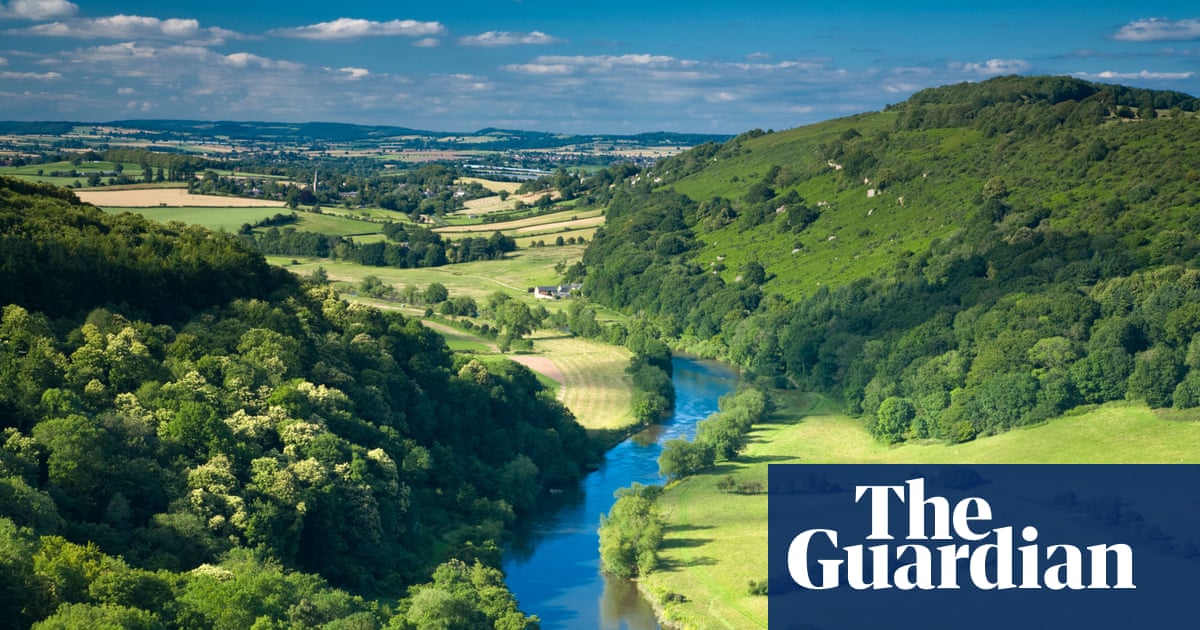What is the duty of the nature writer? It’s a question nature writers love to ask themselves. The more optimistic might say that their task is to mend humanity’s broken relationship with the natural world; pessimists that their role is merely to “bear witness” to life on a dying planet. As the nature-writing genre continues to flourish – in terms of sales, at least – the answer from publishers might be that the first duty of the nature writer is simply to write.
John Lewis-Stempel certainly seems to have followed that instruction. He is the author of some 17 books on the natural world – The Running Hare, The Sheep’s Tale, The Soaring Life of the Lark, etc – and he is the only person to have twice won the Wainwright prize for nature writing. A remarkable career, especially when you consider that writing isn’t even his day job. He divides his time between his valley farm in Herefordshire and his potager in south-west France and claims to write his books “on bits of paper while I’m working down on the farm. Scraps on scraps.”
The idea for his latest, England: A Natural History, came to him while waiting for the ferry at Dover. Flicking through the back pages of his pre-Brexit passport, he noticed the illustrations: “scenes of quintessentially British habitats, English especially, outside my familiar farmland. Moor, Lake, Park, Coast … I realised in that moment I wanted to know those places, really know them … I wanted to observe not from the outside, but to be part of the scene.”
How does a man – that uniquely unnatural animal – become part of a dozen natural habitats in a meaningful way? Perhaps by living in each of them for a while? Going a little feral himself? No. “Generally,” Lewis-Stempel writes, “I have simply ‘wandered’ these English habitats in a personal recording of what was encountered with eyes, ears, nose wide open, without discrimination.”
Lewis-Stempel is, initially, an amiable enough companion on this rambling English journey, with a flair for description, especially of smells: the “baked apple attar of pig poo”; the “pissy smell” of a pipistrelle hibernaculum. He knows his onions, too. And his orchids, avocets and ants. The pages of England: A Natural History are heavily sown with facts, perhaps in an attempt to compensate for the lack of any central investigation. These thickets of research come to obscure the habitats one is supposed to be admiring and are often accompanied by jarring asides: “Quite the entomologist, Shakespeare”; “Slippery things, eels”; “Quite wet, Norfolk”.
The most quintessential of his quintessentially English habitats is his home turf, with its “smile-inducing Shetland ponies in a paddock, tidy allotments, church steeples rising out of shallow valleys, lumined sheep safely grazing on pastures … English things.” It’s a vision that excludes a great deal. Passing through Slough, Lewis-Stempel quotes Betjeman (“Come, friendly bombs … ”); catching sight of a new-looking housing development, he wails: “They are building over England!
after newsletter promotion
According to Lewis-Stempel, all the best nature writers are dead. His literary pantheon is peopled by the Reverend Gilbert White (1720-1793), John Clare (1793-1864), WH Hudson (1841-1922), and their ilk. While Lewis-Stempel’s sentences often leave one wondering which century they were written in – “Always, I tried to show the Nature of England (NB the majuscule ‘N’)” – his tribute act rings hollow. The works of his heroes are alive with incident, animated by the spirit of inquiry. Hudson’s A Hind in Richmond Park, for instance, begins with a hilariously revealing scene in which the author accidentally causes a child to be savagely attacked by a deer. When Lewis-Stempel visits Richmond Park himself, he sits under a tree and feels a bit grumpy about parakeets. He reads a much more interesting sounding book (Geoffreoy Delorme’s Deer Man) and then, with nothing better to do, he imagines 24 hours in the life of an oak. It’s pleasant enough, but what’s the point?
Nature in England is precious. It is under threat. Since 1970, native species in the UK have declined in abundance by 19%. What might the future hold for nature? How can those who love it protect it? Questions unexplored. Lewis-Stempel seems content to tend his own garden, “a glass of Pimm’s in my hand, a gorgeous valley in my eyes”. What’s the duty of a nature writer? More than this.
